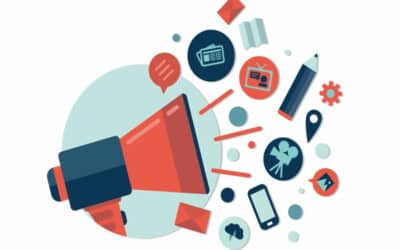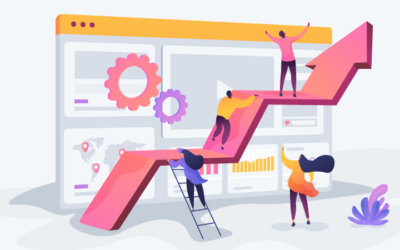Believe in horoscopes for good vibes? Ever felt that chemistry with people around you – not just in a romantic way, but a friendly connection?
Well, calm down, you’re not reading a lightweight magazine or a love article, but our blog on email marketing. However, whether it’s about winning hearts in love or marketing, the key is to make that perfect click with others to create the ideal atmosphere.
What would be a lifelong flirt in the world of digital marketing translates into strategies for lead generation, meaning individuals or companies showing interest in a company’s products or services.
Hence the importance of connecting with as many as our creativity allows. Marketing doesn’t believe in horoscopes or strokes of luck; chemistry is built as we extract valuable information from others to make your discourse align completely with their interests and expectations, like through web scraping. 😃
Feeling up to learning about this wonderful technique? Here, we’ll tell you how to generate twice as many leads using web scraping, its benefits, what information you can extract, and a step-by-step guide to make the most of it.
🔍 What is Web Scraping?
Web scraping, also known as web data extraction, is the process of gathering information from different websites. It involves using specialized software to automatically extract and store data in a database or file. This technique can be used to obtain a wide variety of information, including product prices, contact details, customer reviews, and more.
💼 How is it used in lead generation?
Web scraping has become a valuable tool in lead generation. It allows you to gather valuable information about potential customers and create targeted and personalized marketing campaigns, increasing the chances of converting leads into real customers.
📋 What information Can I extract?
Web scraping acts like a little gossip machine to get everything you need from your potential customer. It offers the ability to extract a wide range of information for lead generation. Some examples of data that can be obtained include:
- Contact information: names, emails, phone numbers, addresses.
- Interests and preferences: demographic information, online behavior, purchase history.
- Social media data: social media profiles, followers, interactions.
- Customer reviews and opinions: comments, ratings, testimonials.
🚀 How to Use the Extracted Information?
Once you’ve extracted relevant information using web scraping, it’s important to use it effectively to generate high-quality leads. Here are some ways to leverage the extracted information:
- Audience segmentation: Use demographic and behavioral data to segment your leads into specific groups. This allows you to create more personalized and targeted marketing campaigns, increasing conversion possibilities.
- Message personalization: Tailor your content and marketing messages based on the interests and preferences of your leads. This will make potential customers feel more connected and increase their interest in your products or services.
- Direct contact: Use the contact information obtained through web scraping to establish direct communication with your leads. You can send personalized emails, text messages, or even make phone calls to provide additional information or answer their questions.
🔧 Steps to perform web scraping for lead generation
If web scraping had commandments, these would be it. Don’t leave this technique to chance; follow these steps to generate leads:
- Identify sources: Determine the websites from which you want to extract information. These can be competitor websites, business directories, social media, and more.
- Choose the right software: There are various software and tools available for web scraping. Research and select the one that suits your needs and budget.
- Configure the software: Once you’ve selected the software, configure it according to the parameters you want to extract. This may include keywords, categories, locations, and more.
- Run web scraping: Start the data extraction process using the selected software. Make sure to follow best practices and the policies of each website to avoid legal issues.
- Store and organize the data: After extracting the information, save it in a database or file. Organize it for easy access and use in future marketing campaigns.
🛠️ What software can you use for web scraping?
There are different software and tools available for web scraping. Here are some of the most popular ones:
- Mailerfind 💌: Our automated system for mass emails and lead extraction not only collects data, including social media profiles and websites if associated, but also specializes in networking through professional emails. Thanks to its smart algorithm, you can find professional emails of potential clients, verify them, and even run a full email campaign through Mailerhub, the autoresponder that recovers abandoned carts, informs about new products, shares valuable content, sends special promotions, reminds, requests reviews, sends surveys, and more. All in one, saving you a lot of time and delivering successful results.
I recommend taking a look at the Mailerfind Guide to learn how to monetize leads. 👀💰
- BeautifulSoup: This is a Python library that allows for quick and easy data extraction. Although not a web scraper itself, it’s an essential tool in the web scraping process. BeautifulSoup analyzes the structure of a web page and extracts specific data from it, making it ideal for simpler and more specific web scraping projects.
- Scrapy: Scrapy is a Python framework that facilitates large-scale web scraping. Unlike BeautifulSoup, Scrapy is a more comprehensive and powerful tool for efficiently crawling multiple web pages, following links, and extracting data. It’s highly customizable, allowing developers to define how requests are made, how content is analyzed, and how data is stored.
- Octoparse: Octoparse is a cloud-based web scraping tool that doesn’t require programming knowledge. It’s easy to use and offers an intuitive interface. The platform provides features like visual element selection on the page and the ability to schedule extraction actions. Octoparse is an excellent choice for those with little programming experience, as it eliminates the need for custom code. However, it may be less flexible compared to programmatic solutions like Scrapy, primarily designed for simpler scraping tasks.
As you can see, web scraping isn’t an option but a necessity in your life. If you’re still not convinced of all its benefits, here they are:
- Time-saving: Web scraping automates data collection, saving time and resources for businesses.
- Accurate information: By using web scraping, you can obtain precise and up-to-date information about potential leads, allowing for more informed marketing decisions.
- Effective personalization: Information extracted through web scraping allows for effective personalization of marketing messages and campaigns, increasing conversion chances.
- Competitive edge: Web scraping provides insights into your competitors, enabling you to analyze their marketing strategies and make informed decisions to stay competitive in your market.
In conclusion, web scraping is a powerful technique for lead generation in the digital world. Knowing your leads is like knowing your future spouse, so delve deep. Utilize web scraping for a happy and long-lasting partnership or, in terms of marketing, guaranteed conversion.
Start using web scraping in your lead generation strategy and make a difference!
If you found this article useful, share it with your friends and family, and of course, we look forward to seeing you on our website soon! 🚀📈





0 Comments